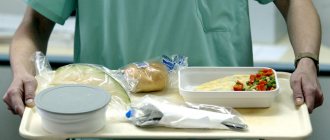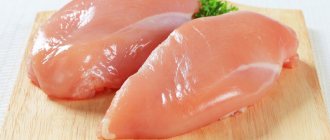The vast majority of people who are diagnosed with a peptic ulcer and offered surgical treatment try to delay such an exciting event. Until the end, patients try to improve their condition with the help of conservative drug therapy and alternative medicine. However, it is not known whether conservative treatment will be beneficial or whether it is better not to waste time and finally resolve the issue.
In some cases, an attempt to delay the operation leads to a deterioration in the condition of the mucous membrane of the organ, no longer from the disease, but from the endless use of medications. As a result, surgery is required for stomach ulcers.
Against the background of chronic gastric and duodenal ulcers, concomitant diseases of the digestive system often develop. Patients often ask how long it is permissible to postpone surgical treatment. Of course, patients find the prospect of going under the surgeon’s knife unpleasant when they know the possibility of continuing treatment with conservative means. We will review the surgical interventions possible for the treatment of peptic ulcer disease and complications.
Who is the operation indicated for?
Indications for surgical treatment of peptic ulcer are relative and absolute. Complications caused by peptic ulcer disease become absolute indications for urgent radical intervention. In such a case, surgical treatment of a peptic ulcer is the only way to save the patient’s life.
Absolute readings
- Pyloric stenosis or stenosis of the duodenal bulb.
- Penetration – germination of a duodenal ulcer into neighboring organs.
- Perforation of the stomach wall.
Relative readings
Other indications for surgical treatment of duodenal ulcers include the following circumstances:
- Lack of results from drug treatment for a long time. Surgery comes to the rescue.
- Significant deterioration of the patient's condition against the background of an existing ulcer.
Almost half of the cases of peptic ulcer present in patients show indications for surgical intervention. Some surgical interventions are performed in the coming hours for emergency reasons, when patients are admitted to the hospital in the direction of the emergency station.
Other interventions upon diagnosis are carried out as planned. Upon entering the hospital, patients are fully prepared and examined.
How is resection performed?
There are two different ways to perform a gastrectomy. All of them are performed under general anesthesia. This means that you will be in deep sleep during the operation and you will not be able to feel pain.
Open surgery – involves one large incision.
Laparoscopic surgery – uses small incisions and specialized instruments. It includes less pain and faster recovery time. These are more advanced surgeries with a lower complication rate.
For stomach cancer, open surgery is recommended.
After the operation, the doctor will close the incision with stitches and the wound will be bandaged. The patient will undergo a rehabilitation phase under the supervision of a nurse. After surgery, the patient may remain in the hospital for one to two weeks. During this period, tubes will be passed through the nose to the stomach.
This will allow the doctor to remove any fluids produced by the stomach and will help keep you from feeling nauseous. The patient will have intravenous nutrition for three days. On the fourth day, a gradual feeding of 30-50 grams begins after removal of the stomach for cancer, with a gradual increase in portions.
Gastric resection
Organ resection for peptic ulcer disease has a small range of indications. Often surgery is performed when an ulcer in the digestive organ begins to become malignant. This type of intervention is considered the most traumatic, but in some cases it becomes the only possible one. The attending physician decides whether a less traumatic treatment is possible. Resection can have a negative impact on the patient’s health and has a number of contraindications.
Surgery for gastric and duodenal ulcers is the initial stage of treatment. In order for postoperative rehabilitation to be successful, at the end of the intervention you will need to carry out a number of restorative measures and adhere to a strict diet. You will have to consult with nutritionists to find out whether it is allowed to consume a certain product after the operation.
Resection for gastric ulcers is known in several types; the common thing is that during surgery, part of the wall of the digestive canal is removed and the subsequent connection of the remaining part and the small intestine is performed.
Resection of a diseased organ
Types and methods of surgery
There are the following types of surgical excision:
- With a longitudinal type of resection, an operation is performed aimed at removing the side wall of the stomach.
- During an anthrumectomy operation, the pyloric part of the organ is excised.
- Almost complete removal of the body of the stomach is called gastrectomy.
- If the acidity level in the organ cavity increases, two-thirds of the stomach is surgically removed.
- For ulcers resistant to drug therapy, subtotal resection is performed.
Features of the operation
If the surgical treatment of a stomach ulcer was satisfactory, after a week the patient will be allowed to sit up in bed, and after ten days - to slowly get back on his feet. The rehabilitation period after surgery takes about a year. In some cases, dispensary observation lasts up to three to five years.
Features of longitudinal surgery
The mentioned resection is called vertical or sleeve. The volume of the stomach is reduced by removing the side wall.
This type of surgical intervention is relatively new. The intervention began to quickly gain popularity around the world. Surgery is often used as a last resort to combat obesity. A new treatment for excess body weight is considered the most effective.
Longitudinal gastric surgery
When removing a large part of the body of the organ, the valves and sphincters of the stomach must be left. As a result, the operation will transform the distended stomach pouch into a tube with a narrow cross-section. When the volume of the organ is incomplete, rapid saturation occurs. The operated stomach can accommodate much less food, quickly leading to a decrease in the patient's body weight.
A useful and important detail of the resection is the fact that when the stomach wall is removed, the area where the production of a special substance, ghrelin, which controls the sensation of hunger, is simultaneously removed. The patient stops constantly feeling hungry.
Laparoscopic resection
This type of surgical intervention belongs to innovative methods, called minimal removal surgery. The intervention does not require an extensive incision. To treat diseases of the gastrointestinal tract, surgeons use a special device - a laparoscope. Through narrow openings, the necessary instruments are inserted into the abdominal cavity, and part of the stomach is manipulatively removed.
The disadvantage of this intervention in some cases is the high cost.
Types of surgical treatment
Modern medicine for the treatment of gastrointestinal ulcers offers the following types of surgical intervention:
- Vagotomy is an operation that is a surgical dissection of the so-called branch of the vagus nerve, which is responsible for the process of stimulating gastric secretion. With this type of surgical intervention, the natural process of transition of gastric contents into the cavity of the duodenum is disrupted, resulting in the connection of the stomach with the small intestine.
- Resection today is considered one of the most effective techniques used in the treatment of peptic ulcer disease. This type of surgical intervention involves excision of individual areas of the gastrointestinal tract affected by ulcerative lesions. Postoperative recovery takes about a year.
- Local excision is a surgical intervention to remove foci of ulcerative lesions surgically. This technique is characterized by a reduced degree of trauma, but it only eliminates the consequences of the disease without fighting its cause, which leads to frequent cases of relapse.
- Palliative suturing of an ulcer is usually used in case of perforation. During the operation, the abdominal cavity is cleaned of its contents, followed by suturing of the ulcerative lesion with a seromuscular suture in a transverse direction relative to the gastric axis.
- Gastroenterostomy is an operation to create a so-called gastrointestinal anastomosis. In this case, a channel is created connecting the stomach with the small intestine, which serves to pass food bypassing the duodenum and the pylorus.
Suturing the ulcer
When a stomach ulcer is perforated, a suturing operation is performed. Most often, suturing of a perforated gastric ulcer is performed under general anesthesia, less often - under combined anesthesia. Surgical intervention is included in organ-preserving operations for peptic ulcer disease.
Operation technique
A midline opening of the abdominal cavity is performed. The contents of the stomach, poured into the cavity, are drained using an aspirator or dressing material. Then a visual assessment of the condition of the stomach and duodenum is carried out. The perforation area is separated with gauze napkins. The hole is sutured.
To prevent stenosis from developing in the area of suturing a perforated ulcer, the suture is positioned perpendicular to the longitudinal axis of the stomach. A sheet of omentum is sutured to the site of the perforated gastric ulcer. If the pyloric section of the stomach is severely narrowed, a gastric anastomosis is performed between the small intestine and the body of the stomach.
Plastic surgery for perforation
In the callous form, suturing the ulcer may be inaccessible or technically difficult; in this case, plastic surgery of the stomach wall is performed using a sheet of omentum. A section of the omentum is sutured to the wall of the stomach and covers it, isolating the stomach cavity and tamponing. Serous sutures are placed on the stomach wall. Such treatment of stomach ulcers is difficult with a large number of adhesions.
What are ulcerative lesions of the digestive system?
Peptic ulcer is a chronic disease that manifests itself in the form of ulcerative lesions of the mucous membranes of the stomach and duodenum. The pathology is quite widespread. According to statistics, up to 10% of the population suffers from peptic ulcers. Moreover, in most cases it affects young, able-bodied people aged 20 to 40 years.
The disease significantly worsens the patient's quality of life and has an extremely negative impact on his overall health. Stomach and duodenal ulcers are accompanied by severe pain, nausea, vomiting and heartburn. In the absence of adequate therapy in an advanced form, the disease can lead to such serious consequences as perforation of the gastric and intestinal walls, perforation, penetration, and the development of internal bleeding that poses a danger to the patient’s life. That is why ulcerative lesions of the gastrointestinal tract need to be treated promptly and competently.
Gastric removal
Complete removal of the stomach or gastrectomy is performed when the ulcer becomes malignant. To remove an ulcer, the abdominal cavity is opened and the location of the tumor is assessed.
If the upper part of the stomach and esophagus are affected, an additional diaphragmatic incision is made. Together with the stomach, the ligamentous apparatus, part of the omental layer, and a section of retroperitoneal fat are removed. The stomach is cut off at the junction of the esophagus and the duodenal region. After excision of the body of the stomach, the lumen of the esophagus and duodenum are sutured.
The operation to completely remove the stomach is classified as complex. This concerns the patient’s health status, the technical abilities and knowledge of the surgeon who will perform the surgery. Surgical treatment often results in a lot of complications. This is due to the technical difficulties that arise when carrying out such treatment. Final removal is highly traumatic for the body.
The patient loses the ability to digest food physiologically. In addition to digestive problems, a patient operated on in this way experiences a complication associated with the hematopoietic system. The stomach produces special biologically active substances that normally stimulate the processes of erythropoiesis. In addition, patients begin to be bothered by the complication of backflow of food mass from the small intestine into the esophagus.
If the fusion of sutures between the remaining parts of the digestive system is delayed and disrupted, the process is considered an extremely serious complication. With this development of events, the patient has almost no chance of recovery. If the outcome of the operation is favorable, the patient is discharged from the hospital after two weeks.
The essence of surgical treatment
Surgical treatment for gastric and duodenal ulcers involves organ-saving operations or the use of radical resection techniques. The choice of type of operation is determined by a specialist surgeon individually in each case. This takes into account factors such as the age and general health of the patient, the presence of complications and concomitant diseases, the form and stage of the course of the peptic ulcer, the size of the ulcerative lesions, etc.
During the operation, doctors are aimed at excision of the ulcerative lesion, eliminating the pathology that causes the development of associated complications, and reducing the level of gastric secretion. At the same time, it is extremely important that the treatment entails as few side effects and complications as possible, which also largely depends on the level of skill and qualifications of the surgeon.
How to behave after surgery
After surgical treatment of a gastric ulcer is performed, the patient requires careful care, a strict diet and a long rehabilitation course. Treating peptic ulcers will require a special diet and medications that reduce the acidity of gastric juice and promote regeneration processes. The operated stomach requires the patient to be registered at a dispensary and long-term observation. Only the attending physician will determine whether the patient is allowed to take the desired food or certain medications.
Nutrition after gastric surgery must be gentle. In the first days, the patient does not receive any water or food; feeding is done intravenously. Then foods that do not irritate the walls of the digestive tract are gradually introduced. You will have to follow a strict diet for at least a year.
How to prepare for surgery?
Fibrogastroscopy is the most informative diagnostic method.
Before the operation, the patient is sent for a series of examinations, which include the following methods:
- electrocardiography;
- general examination of urine and blood;
- X-ray of the chest and gastrointestinal tract;
- EGDS, during which material is taken for biopsy;
- computed and magnetic resonance imaging of the gastrointestinal tract;
- Ultrasound of the liver.
Operation
There are several methods for surgical treatment of peptic ulcers. Each of them is used depending on the type and nature of the pathology. Each method has advantages and disadvantages, and the possibility of postoperative complications. Consequences may appear immediately after the intervention or after a certain period of time.
Bleeding occurs more often, postoperative peritonitis, intestinal obstruction, inflammation, dehiscence, and suppuration of the sutures occur.
Diet and nutrition
Diet is extremely important when treating stomach ulcers. The general condition of the patient and the speed of recovery depend on the accuracy of its observance. For 3-5 days, liquid food is offered in the form of broths, a little sour cream, jelly, pureed cottage cheese, vegetable soups and semolina porridge. Puréed lean meat is allowed from 7 days.
Meals should be divided into small portions up to 6 times a day. The diet is based on semi-liquid dishes, steamed or boiled in water. Pieces of food must be chewed thoroughly. The food temperature should not exceed 15-60°C.
It is allowed to eat omelettes, soft-boiled eggs, cod, and oatmeal infusions. It is recommended to drink - rosehip decoction, jelly, non-concentrated tea. In the first 30 days after surgery for stomach ulcers, you should eat dried white bread and biscuits.
Junk food in fatty, fried, spicy, smoked form with preservatives is strictly contraindicated. Vegetables containing coarse fiber, such as white cabbage, radishes, and turnips, are prohibited. It is better to cook compote or make jelly from fruits.
Preparation
Before surgical treatment of gastric ulcers, the patient undergoes a gastrointestinal cleansing, during which all intestinal contents are evacuated. In case of blood pressure disorders, preoperative preparation also involves the elimination of hypovolemic manifestations.
The duration of preparation for surgery is determined by the patient’s condition, and intervention tactics are selected based on data obtained during diagnosis after the location of the ulcerative lesion has been established.
When selecting the type of surgical intervention, the specialist must take into account the time that has passed since the development of the ulcerative defect, the prevalence and severity of peritonitis, the localization and origin of the ulcerative formation, as well as technical capabilities.
If the patient has an emergency condition with perforation of an ulcerative lesion, then preoperative preparation is not carried out, because there is no time left for it. Surgery is performed immediately after the ulcer is delivered to the surgery department.
If the surgical intervention is planned in advance, then a number of preparatory procedures are carried out, which include:
- Clinical, laboratory, detailed blood tests;
- Diagnosis of feces for occult blood;
- pH-metry aimed at assessing acid-forming gastric function;
- X-ray diagnostics;
- Endoscopic examinations;
- Obtaining a biopsy sample from the tissue surrounding the ulcerative defect, which is sent for histology;
- Electrogastroenterographic study;
- Tests for the detection of Helicobacter;
- Antroduodenal manometry aimed at identifying pathological structural changes in the motility of the gastroduodenal gastrointestinal tract.
Not all of the above diagnostic techniques are applied to patients; sometimes some of them are not carried out due to the lack of necessary equipment or in cases where there is no need for these studies.
Types of operations for stomach ulcers
Modern surgery has several surgical methods for treating gastric ulcers. These include vagotomy and resection, endoscopy and laparoscopy, laser cauterization or suturing of the organ, etc.
Suturing
This method of surgical intervention has an undoubted advantage - palliation, therefore, after such an operation there is a minimum of complications. The main indication for gastric suturing is ulcerative perforation.
- First, the stomach is completely cleared of its contents by suction with a suction device.
- Then the stomach cavity is dried with surgical gauze napkins. To easily detect the perforation area.
- The affected area is sutured with a suture using the seromuscular technique, with the suture positioned transverse to the gastric axis. This suture technique prevents narrowing of the pyloric lumen and helps preserve the natural shape of the organ.
- The affected areas of the stomach are removed entirely.
The suturing technique is indicated in the presence of diffuse peritonitis, the development of inflammation more than 6 hours ago, patients of retirement age, the presence of concomitant pathologies or acute symptoms of gastric ulceration.
Resection
Such an intervention can be partial or complete and is usually used when malignancy of the ulcerative process is detected. This intervention has a number of disadvantages, such as high trauma and a lot of contraindications, a huge risk of complications and a long postoperative recovery.
Also, after gastrectomy, it is necessary to strictly adhere to dietary requirements and completely abandon physical activity.
Resection can be of different types, which involve removing the affected lesions using various techniques and with the imposition of a connecting section between the duodenum and the remains of the gastric organ.
There are the following types of resection:
- Antrumectomy with excision of gastric pyloric tissue;
- In case of excessively high acidity, excision of 2/3 of the organ’s lobes;
- Longitudinal resection with excision of the lateral part of the gastric organ;
- Gastrectomy with almost complete removal of the stomach;
- Removal in a subtotal manner is used in the absence of a therapeutic effect using conservative methods of treatment.
Typically, an intervention of this kind lasts no more than three hours; if there are no complications, then after the operation on the 7th day the patient can sit in bed, and after 10 days he can get up. It will take at least a year to fully recover after resection.
Approximately 3 years after resection, the patient undergoes repeated diagnostics, the purpose of which is to assess the effectiveness of the surgical intervention.
Vagotomy
If we compare vagotomy with resection, the first method of surgical intervention has a much lower risk of mortality. Thanks to such an intervention it is possible to achieve:
- Decreased secretion of gastric juice;
- Prevention of severe complications;
- Reducing the frequency of relapses of pathology;
- Keep the organ intact.
During such an intervention, the surgeon removes the vagus nerve, which is responsible for motility and the activity of the secretory gastric glands. Vagotomy is performed for long-term chronic course of ulcerative pathology.
Laser cauterization
A fairly common method of minimally invasive treatment of gastric ulcers today is laser cauterization.
A rubber tube is inserted into the patient through the oral cavity, as during a conventional diagnostic FGDS. Then the specialist performs cauterization. This procedure is carried out about 7-10 times, only after this can one hope for recovery.
This procedure is contraindicated for bleeding ulcers, feverish conditions and acute surgical pathologies. Also, such cauterization is not carried out in case of bleeding disorders, malignant neoplasms in the stomach cavity and circulatory failure.
In general, laser therapy allows one to achieve stable and long-term remission, almost completely relieving the patient of the ulcer.
Contraindications
If the patient has a life-threatening condition that requires urgent intervention, then the only contraindication is the agonal state of the ulcer.
If the operation is planned as planned, then the following may be contraindications for it:
- Acute infections;
- In the presence of decompensated chronic concomitant pathologies;
- If the general condition of the patient is characterized as serious;
- With a malignant nature of the ulcer with distant metastases.
In each case, specialists make a decision regarding the need for surgical intervention individually and taking into account the indications.









